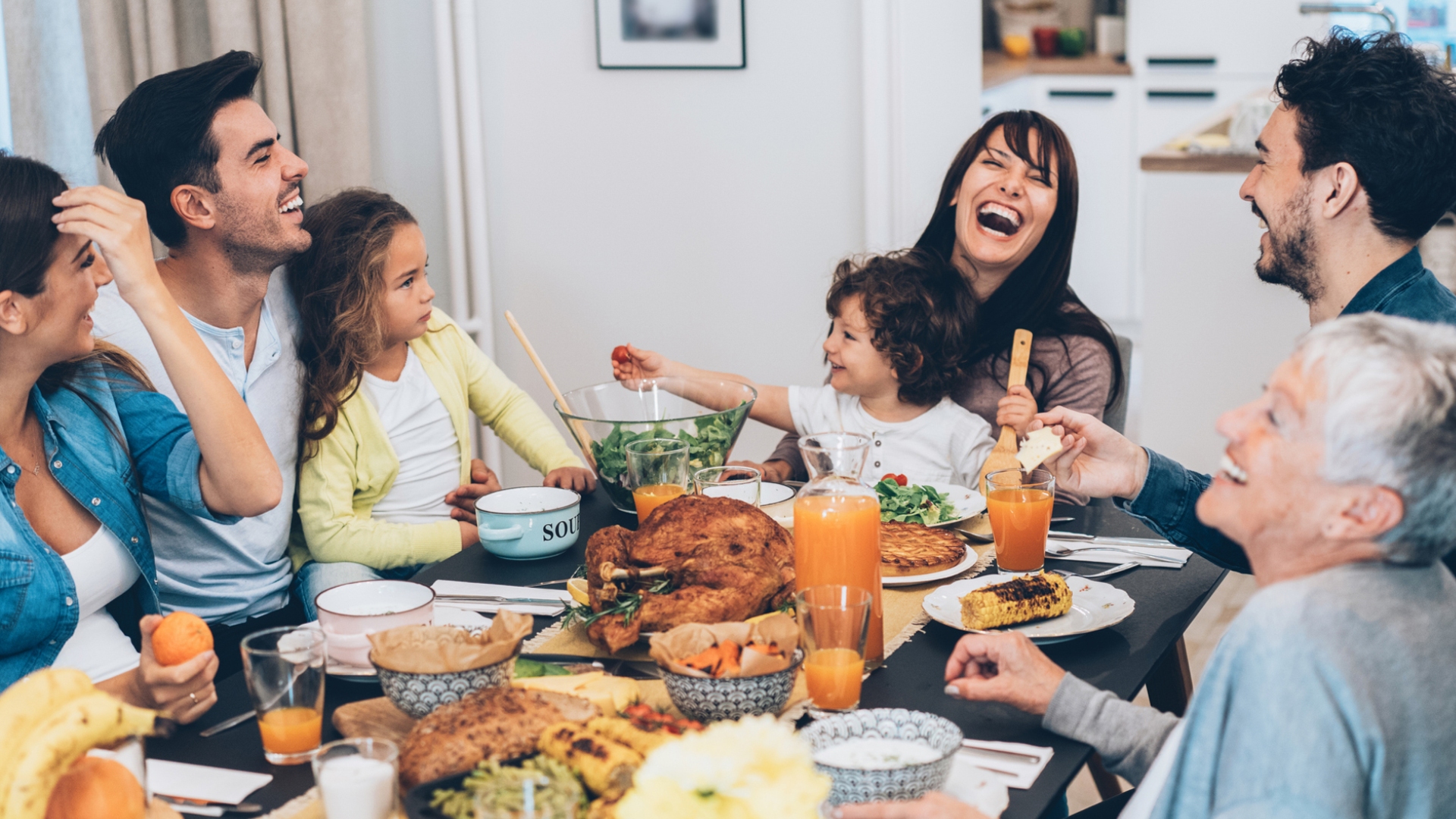Christmas Is The Season For COVID-19 Super Spreaders: More than a million new cases of COVID-19 were reported in the United States over the last week, according to the Centers for Disease Control and Prevention (CDC).
It took over 90 days for the first million COVID-19 cases in the United States to appear.
Now many hospitals across the country are facing staffing, equipment, and bed shortages as record-breaking numbers of patients are admitted with COVID-19.
This has raised concerns about the safety of gatherings this Thanksgiving.
RELATED: How Much Profits Drug Companies Will Make On COVID-19 Vaccine
“It can be very tempting to want to keep with family traditions, which include traveling, gathering with multiple family and friends, and enjoying face-to-face time with people we haven’t seen in a long time,” Dr. Teresa Murray Amato, chair of emergency medicine at Long Island Jewish Forest Hills in Queens, New York, told Healthline.
“However, these activities are of concern this year because they could potentially lead to a more rapid spread of the COVID-19 virus.”
More people getting tested
Some people have prepared for holiday visits by getting tested for the virus, or they plan to get tested before they meet with loved ones.
In New York lines of people waiting to get COVID-19 testing last week stretched across blocks.
But due to the risk of false negative test results, a negative test alone is not enough to ensure that you are actually free of the virus.
That’s why the safest way to celebrate Thanksgiving this year is from home with members of your own household.
False negatives
Multiple tests have been developed to check people for the coronavirus SARS-CoV-2 that causes COVID-19, including rapid antigen tests and slower PCR tests.
Although false positives can occur, positive test results are usually accurate. If you test positive, you should assume you have the virus and self-isolate accordingly.
Negative tests results are less accurate. If you test negative, there’s still a chance that you’ve contracted the virus and can pass it to others.
It’s possible if you were exposed a few days before your test, there is not enough viral build-up to appear on a test. If you then go to a Thanksgiving dinner 2 days later, you may be contagious.
While rapid antigen tests are particularly prone to false negatives, even PCR tests may produce a false negative result.
That’s because it can take several days or more for the virus to become detectable in your body.
“Even the gold-standard, deep nasal swab tests that we’re familiar with, if you’re exposed today, they are likely to be negative for several days thereafter,” said Dr. William Schaffner, an infectious disease specialist at the Vanderbilt University Medical Center in Nashville, Tennessee.
“There simply isn’t enough virus that’s been produced in your body for you to actually test positive,” he continued.
Getting the virus en route
Even if your negative test results are accurate, it’s possible to pick up the virus after you’ve gotten your results but before you see your loved ones.
For example, you may contract the virus in transit while traveling by plane, train, or bus or standing in line at the rest station.
If you contract the virus to a holiday gathering, you could pass it onto other guests at a holiday gathering.
Even if none of them become seriously ill, they may pass it onto other community members who are at heightened risk of a severe infection.
Your gathering could potentially become a superspreader event that leads to infections and even deaths from COVID-19 in your wider community.
“I think we all have to understand that it’s not just about ourselves, it’s about the loved ones around us — especially those most vulnerable, which are our elderly parents and grandparents and so on,” said Dr. Theodore Strange, the interim chair of medicine at Staten Island University Hospital in New York City.
“So I think everybody needs to be cautious and live for another day,” he continued.
“There will be many more Thanksgivings and holidays to come, and so we may have to sacrifice one year of what our traditional celebrations are for the sake of being around for another celebration,” he added.
Self-isolating before testing
If you do decide to get together with people from outside your home, it’s important to take steps to reduce the potential spread of the virus.
Schaffner told Healthline that many people have been sheltering in place for a couple of weeks to prepare for their holiday visits.
Staying home and avoiding contact with people from outside your household lowers your chances of getting the virus. This can help you feel more confident about a negative test result.
If you can’t shelter in place for weeks beforehand, self-isolating for at least a couple of days before you get tested may lower your chances of getting the virus in the days before it can be detected by a test.
“I would highly suggest a test 48 to 72 hours before [your visit],” Dr. Strange said, “and during the 2 or 3 days prior to that testing, stay as quarantined as one can be, not being out and about.”
Keep things small and local
If you’re determined to get together with people from outside your home, the CDC recommends keeping your gathering small, local, and outdoors.
For example, it suggests having a small outdoor meal with family members and friends who live in the same community as you.
Some potential guests may be safer to invite than others.
Anyone who has a fever or other symptoms of COVID-19 should not attend, even if they’ve received a negative test result.
Those who are at high risk of developing complications from COVID-19 due to their age or other medical conditions are also safest at home.
“Grandparents often attend these events, but they’re the most vulnerable. Do we really want to put them at risk?” asked Schaffner.
“What about Aunt Sally with her bad diabetes? Should she come to the Thanksgiving celebration this year?” he said.
Take other precautions
Practicing other standard strategies to reduce the risk of infection is also important for preventing the spread of the virus over the holidays.
“Remain socially distanced in the house as best you can, 6 feet apart,” recommends Strange, “and when not eating, wear a mask”
In some cases, you might need to rearrange your seating or set up extra tables to allow people to spread out while eating.
Setting up outdoor heaters may allow you to spend more time together outsides, advises Amato.
Washing your hands regularly is also essential, she continued. So is limiting contact with shared utensils, serving ware, and condiments.
Communication is key
However you decide to mark the holidays, communicating with your loved ones beforehand can help you set shared expectations.
“A lot of people who are thinking of getting together are calling, emailing, or Zoom-meeting people who are going to be at the gathering and getting everyone on the same page,” Schaffner said.
“What are the ground rules when we all get together? Are we all going to wear masks indoors? Are we going to hug and kiss? Or are we going to keep rigid social distancing?” he continued.
When people get together, Schaffner said there’s a tendency to slide into the usual routines and traditions — especially if people are drinking alcohol.
But staying safe this holiday season means staying cautious.
“What we should be thinking about is, what can we do this Thanksgiving to ensure that everyone who would normally be present will actually be present in 2021?” said Schaffner.
“We want to give thanks, we do not want to give the virus,” he added.






